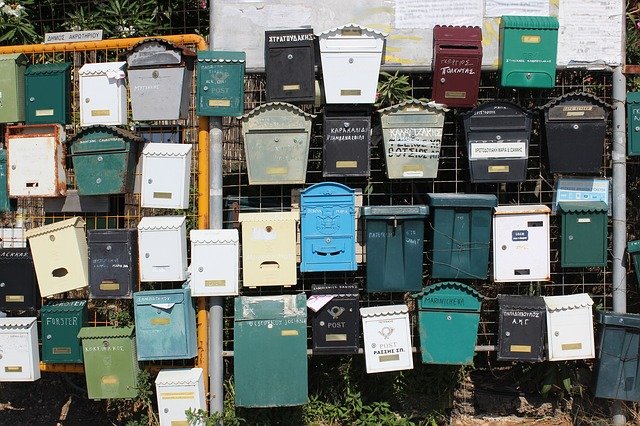
Update on National Council of Nonprofits Litigation
04.26.2025 | Linda J. Rosenthal, JD

Last week was a big one for bipartisan Congressional action.
Two major legislative packages are awaiting the President’s signature. In both cases, there were wish lists by the nonprofit sector that our community leaders lobbied for hard with strong grassroots assistance. But each of the final measures fell well short of our needs and goals.
In this post, we’ll take a look at first reactions to H.R. 3076, the Postal Reform Act of 2022. Passed in February by the House with overwhelming bipartisan support (342-92), it finally cleared the Senate on Tuesday, March 8th with a 79-19 vote tally. This compromise measure includes some important benefits for Americans and the economy as a whole, but fails to roll back (or prevent future) disastrous hikes in the “preferred postal rates” for nonprofits.
Next up will be The Consolidated Appropriations Act, 2022. It funds the federal government through the end of this fiscal year on September 30, 2022, averting yet another imminent government shutdown. The 2,741-page bill was released early Wednesday morning, March 9, 2022, and passed the House that evening. It then cleared the Senate on March 10th. There was bipartisan support in each chamber, resulting in passage of many important provisions. But “the Omnibus” left out several important elements of the #Relief4Charities agenda. Our “first look” will explain which important elements did not make the cut and why.
In posts from 2018 through the middle of last year, we discussed the history and evolution of postal service in the U.S. dating back to pre-Revolutionary days. See, particularly, Bad News On Nonprofit Postal Rates (August 31, 2021). “The roots of the postal service date back to the year before the Declaration of Independence; its importance to the new country’s welfare and growth as a democracy was highlighted by its inclusion in the U.S. Constitution.”
In a nutshell, the establishment and operation of a nationwide mail-delivery system was so critical to our country’s progress and economic well-being that it is the only federal agency specifically mentioned in the U.S. Constitution. The mandate that it provide mail delivery everywhere in the nation is a big factor in both its wide popularity for 250 years and its persistent and systemic challenges. To this day, for instance, there is mail delivery to a single remote location in the Grand Canyon accessible only by mule.
The most comprehensive reorganization occurred in 1970 when U.S. postal operations were spun off from “federal agency” status. Renamed the “United States Postal Service,” it is now “an independent establishment of the executive branch of the Government of the United States.” The USPS is governed by the presidentially appointed, five-member, Postal Regulatory Commission (PRC).
By far, the most significant challenge for the United States Postal Service has come in the twentieth-first century. Technological advances have dramatically changed the way we communicate and transmit information, making “snail mail” less necessary or desirable. And competition from behemoth package-delivery services like UPS and Amazon has cut deeply into the profit margins of the USPS. The COVID-19 pandemic deeply accelerated this trend; tens of millions of Americans shut inside turned to the delivery companies to provide even the most basic necessities of life formerly purchased at retail shops.
Another formidable challenge was inflicted unnecessarily by Congress about fifteen years ago. Described as a “solution in search of a problem,” it is part of the Postal Accountability and Enhancement Act (PAEA) of 2006. The postal service was saddled with a unique and entirely unnecessary burden to pre-fund future retiree health benefits to the tune of about $5.5 billion each year. While this strange mandate has been fairly described as a first step in the GOP’s long-time wish list that postal operations (among other services) be privatized, nevertheless, it passed with bipartisan support.
In any event, “due to cash liquidity and lack of borrowing authority, the USPS stopped making payments in 2012. However, the liability is still noted in financial statements. Most of the losses posted over the last 13 years have been due to this requirement.”
The entirely foreseeable consequence has been financial chaos for the U.S. Postal Service. A significant victim of the search for a remedy for this artificial meltdown in the nation’s mail-delivery system is an important nonprofit organization perk: the long-standing and highly desirable “preferred postal rates.”
In 2018, the nation’s nonprofits were alarmed to learn about proposed deep changes and rate hikes in connection with the well-established special mailing discounts.
This benefit is available to a broad range of “nonprofit” organizations, including some groups that don’t qualify for a 501(c)(3) charitable tax exemption.
For 501(c)(3)s, it is widely viewed as “… an important aid to the success of the mission of many organizations” and “nearly as important as the donation write-off incentive.” See Bad News On Nonprofit Postal Rates (August 31, 2021), linking to Possible Rate Hike For Some Nonprofits’ Mail (September 12, 2018) and Nonprofit Postal Rates: Action Alert (January 22, 2020).
The nonprofit community’s reaction was swift and negative. “Here’s why: Many organizations are dependent on use of premium items to attract and retain donors. Donors … come to expect a trinket of some sort during a mail solicitation. Religious organizations, for example, often include plastic prayer cards or rosary beads.”
Under the USPS proposal, something “as basic as using a metal or plastic paper clip could force a move from Marketing Mail, which used to be called Standard Mail. Organizations would be forced to Priority Mail, Parcel Select or another USPS rate. Packages with goods and merchandise will have an Intelligent Mail package barcode (IMpb) and will travel through the package network stream, according to the USPS.’”
Nonprofits “use the established ‘preferred postal rate’ schedules to make important budgetary decisions for current and upcoming fiscal periods.”
The United States Postal Service increases one or more of these rates from time to time. “Ordinarily, though, a change like that happens only after the USPS follows a standard procedure that gives the affected stakeholders a chance to weigh in on any proposal as well as enough lead time to minimize the negative budgetary impact of any price hike.”
There were “concerns and questions” not only about the rate hike itself, but “also by the irregular procedure being followed….” Led by the Alliance of Nonprofit Mailers (ANM), the nonprofit community began its opposition to this dangerous proposal by participating in the customary public-comment period following that first announcement and after all later moves by the USPS. By our January 2020 post, though, it was clear the protests had not halted movement by the postal authorities towards its unpopular goal; by mid-2021, it was clear the nonprofit sector was losing the battle. The first set of price hikes was already in place.
The ANM’s head, Stephen Kearney, predicted that such a change would have “‘a huge negative effect on nonprofits. It would rule out all front-end and back-end premiums that nonprofits have been sending for years.’” Others involved in nonprofit mailing services also see “a significant negative impact on the many nonprofits that depend on premiums as part of their fundraising programs. While many nonprofits are trying to reduce their reliance on premiums, “… that doesn’t happen overnight.”
The new law is … a real head scratcher.
It’s being hailed by many Democratic leaders as a great compromise measure some fifteen years in the making that remedies the postal service mess created by the 2006 reorganization. But it’s also described as a win for the ten-year strategic plan of highly controversial Postmaster General Louis DeJoy, he of the “delays in service at higher prices” mind-set. See e.g.,: Senate passes $107 billion overhaul of USPS, lauding mail agency’s role in pandemic response (March 8, 2022) Jacob Bogage, The Washington Post and Senate passes sweeping bipartisan bill overhauling the US Postal Service (March 8, 2022) Ali Zaslav and Paul LeBlan, CCN.
This new law certainly ranks right up there with some of the strangest of legislative sausage-making endeavors.
For the nonprofit sector, the upshot of this weird compromise stew is that the USPS is rid of the pre-funded healthcare-liabilities mandate. However, there is an insufficient solution to the long-term financial woes of the USPS to warrant rolling back the devastating changes to the “preferred postal rates” benefit.
See, for example:
From those AMN Top Ten FAQs posted (just after the House of Representatives approved its version):
“Q.10: Will Congress continue to work on further needed reforms of USPS after this bill passes?
“A.10: No. Leading Congressional advocates have described the PSRA as completely overhauling and saving USPS. Congress hates working on postal legislation because of the lack of consensus. A major concern with this inadequate bill is that we will wait years for another chance at real postal reform.”
– Linda J. Rosenthal, J.D., FPLG Information & Research Director
